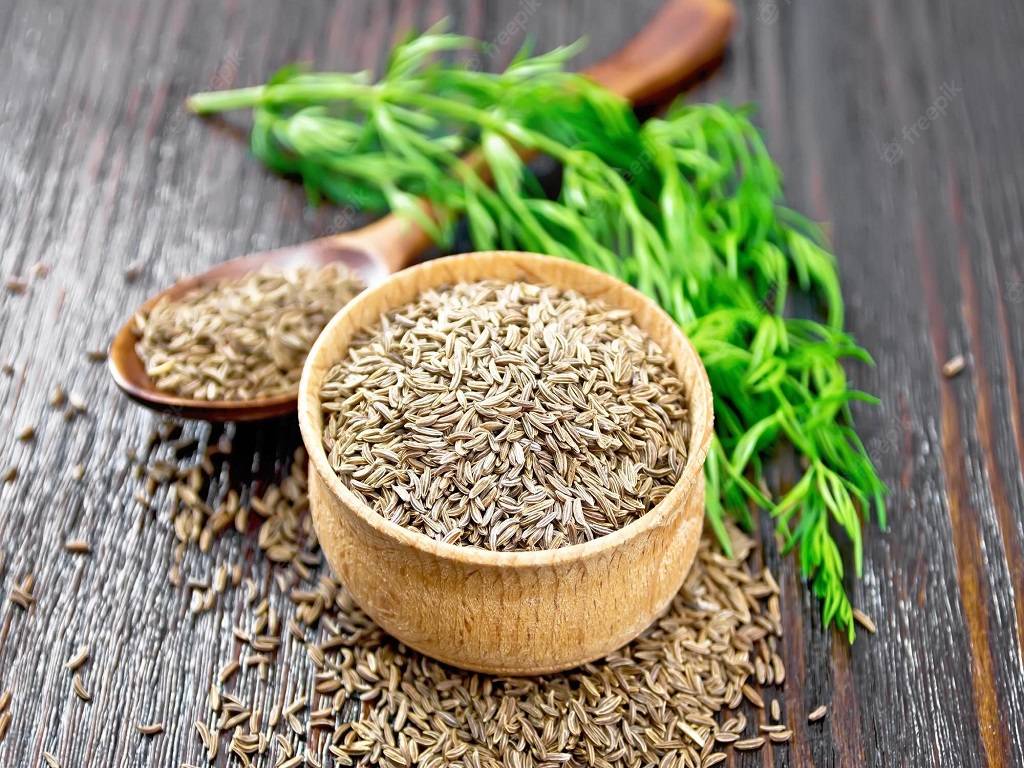
Nearly every cuisine in the world uses cumin in some or the other way. Although it is typically produced for commercial purposes in North Africa and West Asia, it can be grown in gardens as well.
Cumin (Cuminum cyminum) in the Apiaceae family of parsley plants, is a delicate blooming annual used for its seed. It is one of the most widely used spices in the world and is used in many different types of cuisine.
Indian, Mediterranean, Middle Eastern, North African, and Mexican cuisines all use it often. As a Rabi crop, it is extensively grown in Gujarat, Rajasthan, and portions of Madhya Pradesh and Uttar Pradesh. Typically, cumin is used to flavour meals. Additionally, Ayurvedic treatments employ it. The seed's warm, earthy, somewhat bitter taste may improve a wide variety of foods.
Planting Cumin: Step-by-Step Procedure
Let’s look into How to grow and cultivate this spice.
Climate and Soil:
A tropical plant, cumin. It also thrives in subtropical climates. High humidity during blooming and fruit development makes this crop susceptible to fungi. All sorts of soils may be used to grow cumin, however, the crop does best in well-drained sandy loam and medium soils.
Varieties:
Improved varieties like S-404, MC-43, Gujarat Cumin-1(GC-1), GC-2, GC-3, RS-1, UC198, RZ-19, etc., evolved by Agricultural Universities of Gujarat and Rajasthan having higher yield potential are useful for cultivation. The maturity days are 110 to 115 days depending on the variety.
Botany:
It is an annual herbaceous plant that has a 20–30 cm long, thinly branching stem. The pinnate or bipinnate, thread-like leaflets are 5–10 cm in length on the leaves. The tiny, pink, or white blooms are borne in umbels. The fruit is a single-seeded, lateral fusiform or ovoid achene that is 4-5 mm long. Fennel and anise seeds resemble cumin seeds in appearance; however, cumin seeds are smaller and deeper in color.
Rate of Sowing and Seed:
From the first week of November to the first week of December, sowing is done by disseminating or in rows with 30 cm holes. Depending on the manner of planting and the kind of soil, the seed rate might range from 12 to 15 kg per hectare. After treatment with Ceresan, thiram, or Difoltan @ 3.0 g per kg, seeds should be sown at a depth of 1 to 2 cm. It helps to soak seeds for 8 hours before planting them to ensure optimum germination. To make spreading easier, wet seeds need to dry in the shade. Higher sowing depths have a negative impact on seed germination. To reduce the likelihood of pest and disease occurrence, crop rotation should be practiced.
Preparing the land:
Using a harrow or desi plough, the soil is ploughed in 2-3 passes to achieve fine tilth. The land should be cleared of the remains of past harvests by gathering and hauling them away. Breaking clods and leveling the field with a board are both necessary. To enable effective irrigation and intercultural activities, beds of 4 m x 3 m should be constructed before sowing seeds.
Manure and fertilizers:
For a cumin crop, it is advised to use 15–20 MT FYM, 30 kg of nitrogen, and 15 kg of phosphorus per hectare. When preparing the ground, the entire amount of FYM should be incorporated into the soil together with 15 kg of nitrogen and the entire amount of phosphorus as a base dosage. Another recommendation is to top dress with 15 kg of nitrogen one month after seedlings germinate.
Weeding:
To ensure optimal plant growth and development, the crop should be kept weed-free. To keep the weeds in check, often two to three manual weeding is needed. Light intercultural operation is advantageous in drilled crops. 30 to 40 days from the date of sowing is the recommended window for the first weeding and hoeing.
Irrigation:
Crops need 4-6 irrigations, depending on the kind of soil. After seeding, the first light irrigation should be applied, followed by the second irrigation 6 to 10 days later. Following the first irrigation, there should be follow-up irrigations at 30, 45, 65, and 80 days. The time of blooming and fruit set need irrigation. When plants reach maturity, watering should be discontinued.
Harvesting:
Typically, it takes a cumin crop 110–115 days to achieve maturity. Plants turn a yellowish-brown colour when the crop is ready to be harvested. By cutting/uprooting the entire plant, harvesting should be done in the morning. The harvested crop has to be dried in the threshing yard before the seeds are separated. Winnowing should be used to clean seeds. Usually, the shelf life of cumin seeds is somewhere around 2 years.
Cumin Crop Tip:
Companion Planting:
Cumin is an umbelifer, meaning it produces umbels of shallow flowers. Predatory insects like lacewings, ladybird beetles, and parasitoid wasps are drawn to all umbelifers by nature. Plant near any crop that caterpillars or aphids often draw to it.
Some of the suggested cropping systems for cumin growing areas could be:
(i) Dhaincha -Cumin
(ii) Dhaincha- Cumin-Green gram
(iii)Maize - Cumin - Summer Moong
(iv) Pearl Millet-Cumin











